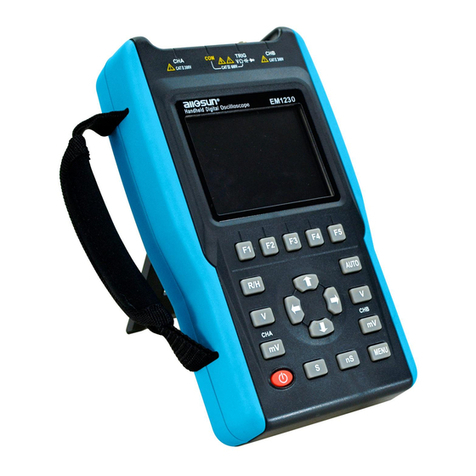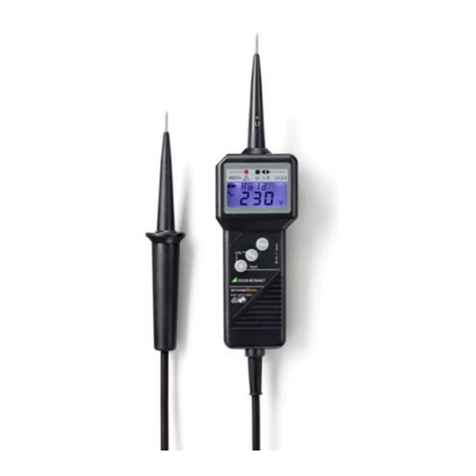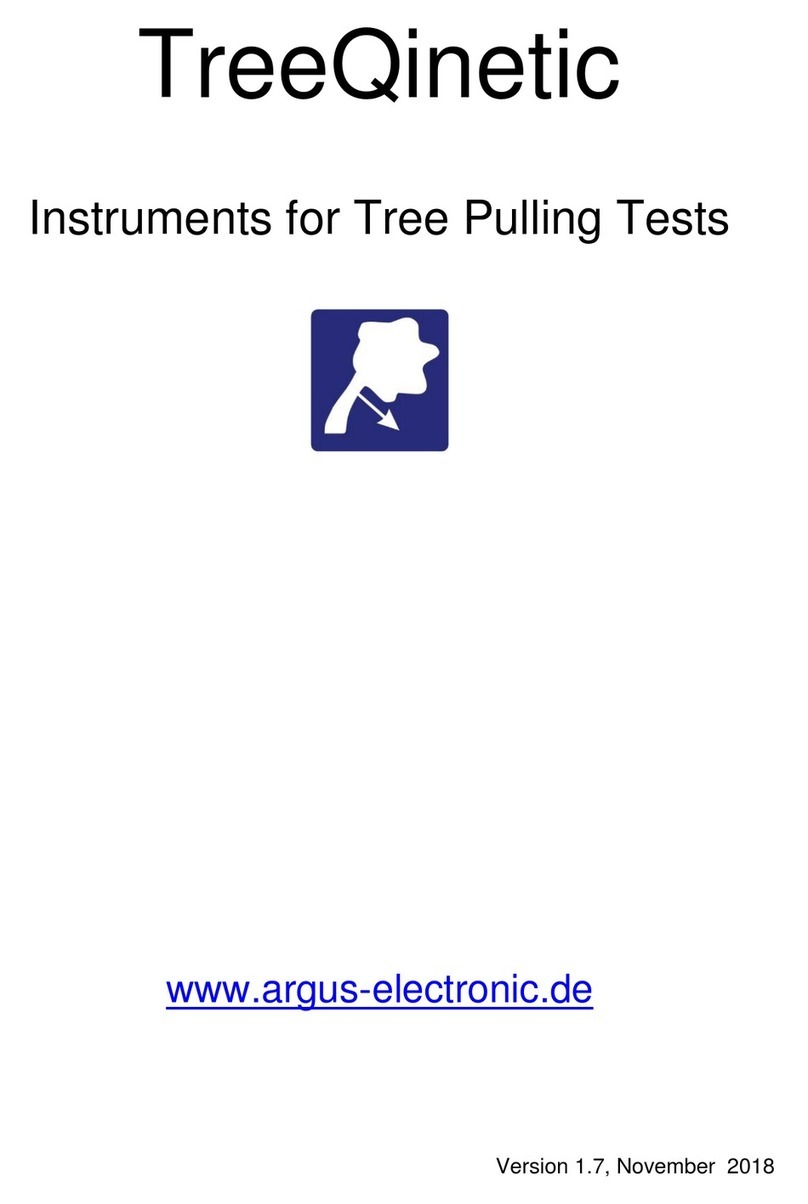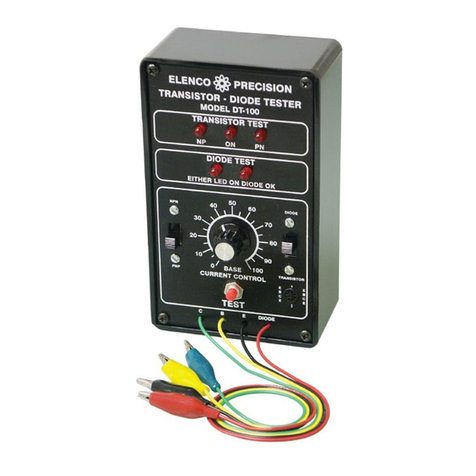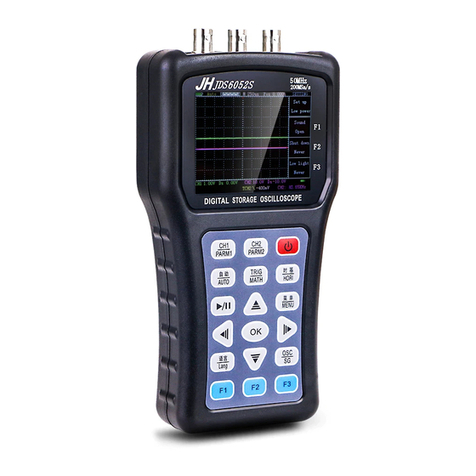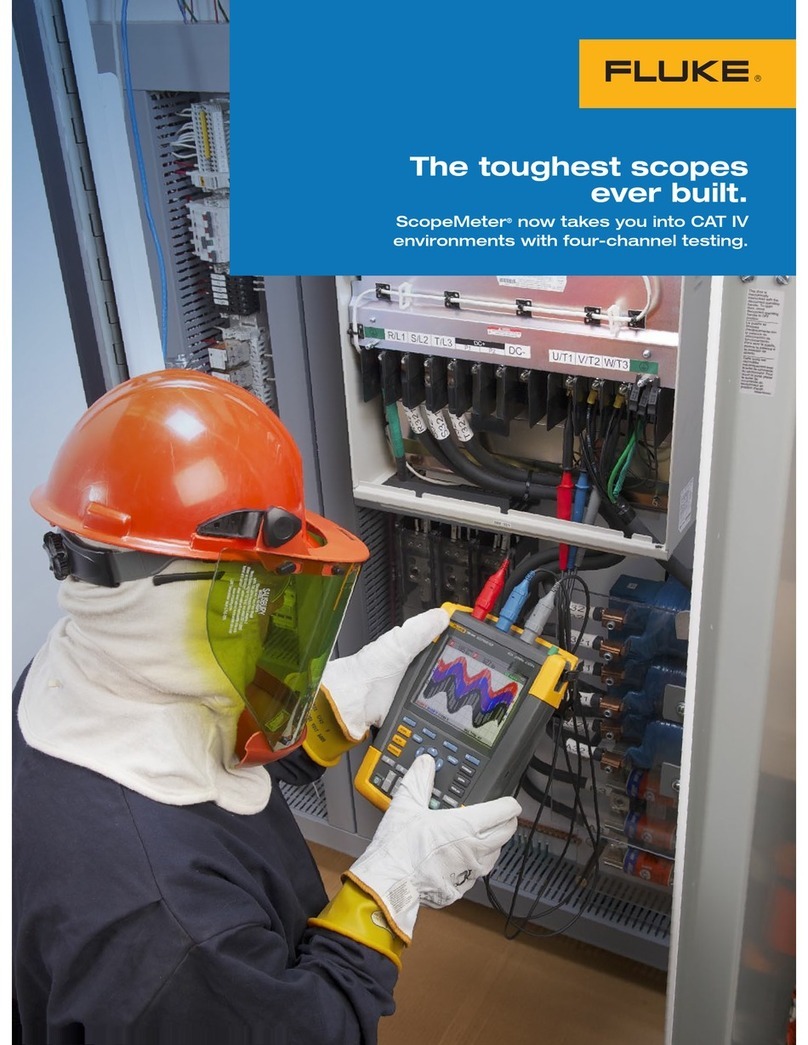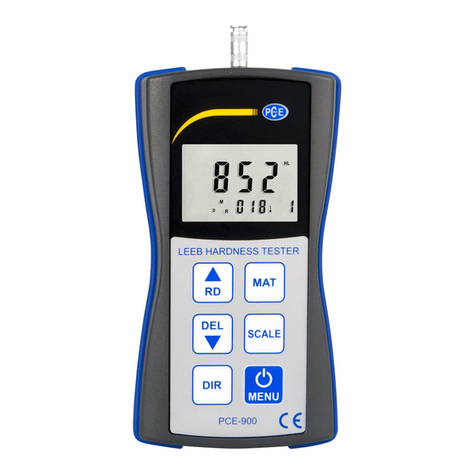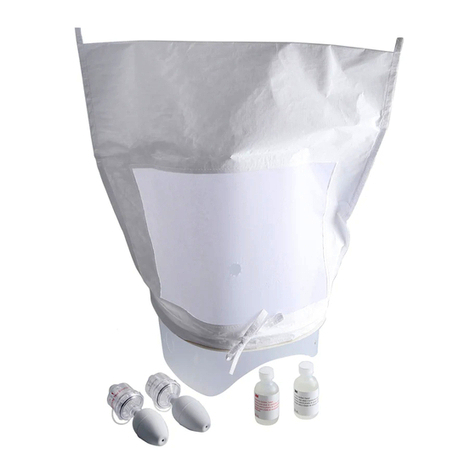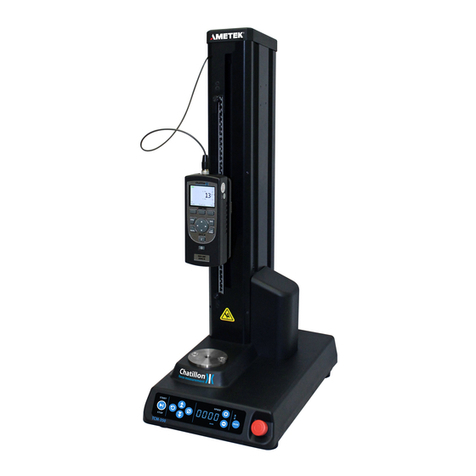Samson TROVIS SAFE 3731 Series User manual

Operating Instructions
EB 8389S EN
Firmware version 1.6x
Edition May 2015
Series 3731
TROVIS SAFE 3731-3 Electropneumatic
Positioner
EXPERTplus Valve Diagnostics

Denition of signal words
DANGER!
Hazardous situations which, if not
avoided, will result in death or seri-
ous injury
WARNING!
Hazardous situations which, if not
avoided, could result in death or se-
rious injury
NOTICE
Property damage message or mal-
function
Note:
Additional information
Tip:
Recommended action
2 EB 8389S EN

Contents
EB 8389S EN 3
1 Description....................................................................................................7
1.1 General ........................................................................................................7
1.2 Start-up .........................................................................................................9
1.3 Diagnostic functions .....................................................................................10
1.2.1 Reference tests .............................................................................................10
1.3.1 Application type ..........................................................................................11
1.3.2 Analysis ......................................................................................................11
2 Monitoring..................................................................................................14
2.1 Status messages ...........................................................................................14
2.1.1 Resetting status messages .............................................................................15
2.2 Condensed state ..........................................................................................18
2.2.1 Condensed at the fault alarm output ..............................................................18
2.3 Logging .......................................................................................................18
3 Statistical information..................................................................................19
3.1 Open/close (on/off) valve ............................................................................21
3.1.1 On/off diagnosis .........................................................................................22
3.1.2 Analysis and monitoring ............................................................................... 23
3.1.3 Resetting single status messages ....................................................................23
3.2 Data logger .................................................................................................25
3.2.1 Permanent data logging ...............................................................................25
3.2.2 Triggered data logging ................................................................................. 26
3.3 Travel histogram ..........................................................................................30
3.3.1 Analysis and monitoring ............................................................................... 31
3.3.2 Resetting single status messages ....................................................................32
3.4 Set point deviation histogram ........................................................................33
3.4.1 Analysis and monitoring ............................................................................... 34
3.4.2 Resetting single status messages ....................................................................35
3.5 Cycle counter histogram ...............................................................................37
3.5.1 Analysis and monitoring ............................................................................... 38
3.5.2 Resetting single status messages ....................................................................39
3.6 Drive signal diagram steady-state .................................................................41
3.6.1 Analysis and monitoring ............................................................................... 42
3.6.2 Resetting single status messages ....................................................................43
3.7 Drive signal diagram hysteresis .....................................................................45

4 EB 8389S EN
Contents
3.7.1 Analysis and monitoring ............................................................................... 47
3.7.2 Resetting single status messages ....................................................................47
3.8 Trend of travel end position ........................................................................... 51
3.8.1 Analysis and monitoring ............................................................................... 52
3.8.2 Resetting single status messages ....................................................................53
4 Tests ...........................................................................................................53
4.1 Drive signal diagram steady-state .................................................................55
4.1.1 Analysis and monitoring ............................................................................... 56
4.1.2 Resetting single status messages ....................................................................57
4.2 Drive signal diagram hysteresis .....................................................................59
4.2.1 Analysis and monitoring ............................................................................... 60
4.2.2 Resetting single status messages ....................................................................61
4.3 Static characteristic ......................................................................................62
4.3.1 Resetting single status messages ....................................................................63
4.4 Partial stroke test (PST) ..................................................................................65
4.4.1 Start triggered by the set point ......................................................................70
4.4.2 Start triggered by the binary input.................................................................70
4.4.3 Analysis and monitoring ............................................................................... 70
4.4.4 Resetting single status messages ....................................................................71
4.4.5 Step response ..............................................................................................71
4.5 Full stroke test (FST) ......................................................................................75
4.5.1 Analysis and monitoring ............................................................................... 78
4.5.2 Resetting single status messages ....................................................................78
5 Dynamic HART® variables............................................................................80
6 Binary input................................................................................................82
7 Appendix....................................................................................................84
7.1 Code list ...................................................................................................... 84
7.2 Error messages and recommended corrective action .......................................91
7.3 Diagnostic parameters and measured data saved in a non-volatile memory .....97
7.4 Determining the ramp times of the partial stroke test .......................................99

EB 8389S EN 5

Overview
Throttling service On/off service
No conguration
required for
monitoring
Travel histogram
u Section 3.3
S
Set point
deviation
histogram
u Section 3.4
S
Cycle counter
histogram
u Section 3.5
S
Drive signal
diagram,
steady-state
u Section 3.6
u Section 4.1
S
T
Trend of travel
end position
u Section 3.8
S
Conguration
required for
diagnosis
Data logger
u Section 3.2
S
Stufng box
u Section 3.5
S
Drive signal
diagram,
steady-state
u Section 4.1
T
Drive signal dia-
gram hysteresis
u Section 3.7
u Section 4.2
S
T
Static
characteristic
u Section 4.3
T
Full stroke test
u Section 4.5
T
No conguration
required for
monitoring
Travel
histogram
u Section 3.3
S
Set point
deviation
histogram
u Section 3.4
S
Cycle counter
histogram
u Section 3.5
S
Trend of travel
end position
u Section 3.8
S
Conguration
required for
diagnosis
On/off diagnosis
u Section 3.1
S
Data logger
u Section 3.2
S
Stufng box
u Section 3.5
S
Static
characteristic
u Section 4.3
T
Partial stroke
test
u Section 4.4
S
T
Full stroke test
u Section 4.5
T
Note:
−S = Statistical information (in-service monitoring) , T = Tests (out-of-service diagnostics)
−Tests highlighted in red border require an initialization with reference test
−Tests highlighted in gray can optimize the proper functioning of safety equipment according to IEC61508 and
IEC61511, provided these tests are performed regularly.

EB 8389S EN 7
Description
1 Description
1.1 General
These instructions EB8389EN supplement
the standard mounting and operating in-
structions for TROVIS SAFE 3731-3 Position-
er (uEB8384-3SEN)
EXPERTplus is a diagnostic rmware inte-
grated into the positioner which allows the
predictive, status-oriented maintenance of
valves with pneumatic actuators.
EXPERTplus records the valve condition while
the process is running (in automatic mode)
and generates messages on the required
maintenance work. In addition, numerous
tests can be performed in manual mode to
pinpoint emerging faults.
The diagnostic functions of EXPERTplus are
completely integrated into the positioner. Di-
agnostic data are compiled, saved and ana-
lyzed in the positioner itself. Classied status
messages on the state of the valve are gener-
ated from the analysis.
Operation using TROVIS-VIEW/DD/DTM/
eDD
EXPERTplus allows the parameters to be
viewed or changed using the TROVIS-VIEW
software (version 3 or 4) or DD/DTM/eDD.
−TROVIS-VIEW 3 and 4 · Operator inter-
face used to congure various SAMSON
devices and dene parameters (current
version is TROVIS-VIEW 4)
−DTM · Device type manager to describe
the device and communication properties
−DD/eDD · Device description/enhanced
device description
All parameter settings that are changed
over the operator interface must also be
downloaded onto the positioner to allow
them to become effective.
Local operation
Some parameters can be changed at the po-
sitioner as well as over the operator inter-
face. The positioner code of these parame-
ters are written in parentheses. Refer to the
mounting and operating instructions of the
positioner for a list of all parameters that can
be changed at the positioner.
The operation described in the following
sections illustrates operation using
TROVIS-VIEW. The default settings of the
positioner and TROVIS-VIEW are written in
square brackets [ ].
Settings highlighted in gray refer to opera-
tion using TROVIS-VIEW.

8 EB 8389S EN
START-UP
Initialization mode
âââ
MAX NOM MAN
â
Initialization with reference test
Yes ß à No Subsequent
initialization
â
Operating mode =
MAN
â â
Zero
Reference of drive signal diagram
steady-state (d1)
Reference of drive signal diagram
hysteresis (d2)
Reference of drive signal diagram
steady-state (d1)
Reference of drive signal diagram
hysteresis (d2)
All reference values are overwritten!
Code 48-h1
andCode 81 Code 48 - h1
ß Not successful
ß Successful
ß Not successful
â
Operating mode =
AUTO
Automatic change to
AUTO operating
mode
àThrottling or on/off service ß
Description – Start-up

EB 8389S EN 9
Description
1.2 Start-up
The positioner must be initialized to use the
full scope of the valve diagnostics. During
initialization the positioner adapts itself opti-
mally to the friction conditions and the signal
pressure required by the control valve.
The positioner can be initialized using one of
the following initialization modes: maximum
range (MAX), nominal range (NOM) and
manual adjustment (MAN).
−Maximum range (MAX)
Initialization mode for simple start-up of
valves with two clearly dened mechani-
cal end positions, e.g. three-way valves
−Nominal range (NOM)
Initialization mode for all globe valves
−Manually selected range (MAN)
Initialization mode for globe valves re-
quiring OPEN position to be entered
manually
The application type, pressure limit and the
start-up parameters required for the selected
initialization must be entered to initialize the
positioner.
Note:
Positioner start-up is described in de-
tail in the mounting and operating in-
structions (see uEB8384-3SEN).
During positioner initialization, the propor-
tional-action coefcient Kp and deriva-
tive-action time Tv levels are optimally set. If
the positioner tends to overshoot impermissi-
bly due to other disturbances, the propor-
tional-action coefcient and derivative-action
time can be adapted accordingly. Increment
the derivative-action time until the desired
behavior is reached. When the maximum
value of 4 is reached for the derivative-ac-
tion time, the proportional-action coefcient
can be reduced in steps.
NOTICE
Changing the proportional-action co-
efcient inuences the set point de-
viation!
Start-up
−Application type (Code 49 - h0):
[Control valve], Open/Close valve
−Initialization mode (Code 6):
[Maximum range(MAX)], Nominal range
(NOM) or Manual adjustment (MAN)
−Pin position (Code 4): [Off], 17, 25, 35, 50,
70, 100, 200, 300 mm, 90°
−Pressure limit (Code 16):
[Off], 3.7, 2.4, 1.4bar
Settings > Positioner > Performance
characteristics
−Required proportional-action coefcient Kp
(level) (Code 17): 0 to 17, [7]
−Required derivative-action time Tv (level)
(Code 18): Off, 1 to 4, [2]

10 EB 8389S EN
Description
1.2.1 Reference tests
The monitoring of friction, supply pressure,
leakage (pneumatics and to the atmosphere),
zero point and actuator springs requires ad-
ditional reference tests for 'Drive signal dia-
gram steady-state' (test d1) and 'Drive signal
diagram hysteresis' (test d2). See u Section
4.1 and section 4.2.
NOTICE
−The valve moves through its work-
ing range during the reference test.
−The reference test cannot be per-
formed if the positioner has been
initialized in the substitute calibra-
tion (SUB) mode.
Right-click 'Start reference test' in the Diag-
nosis folder and select ‘Execute’ to start the
recording of reference data. tESt and d1 or
d2 appear in alternating sequence on the
positioner display.
Note:
−Right-click 'Stop reference test'
and select ‘Execute’ to can-
cel the reference test.
−The positioner records the ref-
erence data automatically af-
ter initialization if 'Initialization
with reference test' is set to Yes.
−A new reference test causes the
results of existing reference tests
to be overwritten and the di-
agnostic data to be deleted.
−If the reference data could not be
recorded correctly or are incom-
plete, Code 48 - h1 is generated
−in the positioner. If the 'Initializa-
tion with reference test' parameter
is activated, an incorrect reference
test is also indicated in Code 81.
−The positioner can still perform
its control task properly even if
the reference test was not record-
ed correctly or is incomplete.
−Data from the rst reference test
are used as the reference if no ref-
erence data are saved in the posi-
tioner on starting the tests for 'Drive
signal diagram steady-state' or
'Drive signal diagram hysteresis'
Diagnostics
−Start reference test (Code 48 - d7)
or
Start-up
−Initialization with reference test (Code 48 - h0):
Yes, [No]
1.3 Diagnostic functions
There are two main groups of diagnostic
functions available: Statistical information
(in-service monitoring) and Tests (out-of-ser-
vice diagnostics).
1. Statistical information (in-service moni-
toring)
Data are compiled, saved and analyzed
by the positioner while the process is
running without disrupting the process.
The positioner follows the set point to po-
sition the valve. A classied status alarm
or fault alarm is generated if the posi-
tioner detects an event.

EB 8389S EN 11
Description
2. Tests (out-of-service diagnostics)
Similar to the statistical information func-
tion, data are compiled, saved and ana-
lyzed by the positioner. However, in this
case, the valve position is not determined
by the set point, but by the active test.
NOTICE
The tests can only be started when
the conditions in the plant allow it
(e.g. plant shutdown or service work
in the workshop). For reasons of
safety, these tests, except for partial
stroke testing, can only be performed
in the manual mode.
An active test is stopped and the posi-
tioner changes to the fail-safe position
when the electrical signal falls below a
certain level or when the solenoid valve
is triggered or the forced venting func-
tion is activated.
1.3.1 Application type
Different diagnostic functions are available
depending on the application type selected
in EXPERTplus.
Depending on the application type selected,
the positioner behaves differently in the au-
tomatic mode:
−Control valve
The positioner uses the set point to posi-
tion the valve.
The valve position (current position) ap-
pears in % on the display.
−Open/close (on/off) valve
Discrete analysis of the set point
The valve position (current position) in %
and O/C (Open/Close) appear in alter-
nating sequence on the display. See u
Section 3.1.
1.3.2 Analysis
Table 2 shows the diagnostic functions and
their statements on the condition of the valve
depending on the application type.

12 EB 8389S EN
Description
Table1: Diagnostic functions and test analysis
Diagnostic functions
Control
valve
Open/Close
(on/off)
valve 1) Analysis See section
Statistical information
Open/Close – •
Breakaway time
Transit time
Valve end position
3.1, page 21
Data logger • • Depending on trigger status
selected 3.2, page 25
Travel histogram •¡Shifting working range
Working range 3.3, page 30
Set point
deviation
histogram
• •
Limit working range
Connection positioner-valve
Inner (seat) leakage
Average set point deviation
3.4, page 33
Cycle counter
histogram • • Stufng box/external leakage
Dynamic stress factor 3.5, page 37
Drive signal
diagram
steady-state
•¡
Air supply
Leakage pneumatics
Actuator springs
3.6, page 41
Drive signal
diagram
hysteresis
•¡
Friction
External leakage perhaps
soon expected
3.7, page 45
Trend of travel
end position • • Observing end position
Zero shift 3.8, page 51
• Full scope of functions
¡ Function is performed, but not analyzed
– Function is not performed

EB 8389S EN 13
Description
Diagnostic functions
Control
valve
Open/Close
(on/off)
valve 1) Analysis See section
Tests
Drive signal
diagram steady-
state
• •
Air supply
Leakage pneumatics
Actuator springs
4.1, page 55
Drive signal dia-
gram hysteresis • • Friction 4.2, page 59
Static character-
istic • • Dead band 4.3, page 62
Partial stroke test
(PST) • •
Overshooting
Dead time
T63
T89
Rise time
Settling time
4.4, page 65
Full stroke test
(FST) • •
Overshooting
Dead time
T63
T89
Rise time
Settling time
4.5, page 75
• Full scope of functions
¡ Function is performed, but not analyzed
– Function is not performed

14 EB 8389S EN
Monitoring
2 Monitoring
2.1 Status messages
The valve diagnostics integrated into the po-
sitioner generate classied status messages.
There are two types of status messages: stan-
dard status messages and extended status
messages.
Standard status messages
Standard status messages contain informa-
tion on start-up as well as on operation and
the condition of the positioner.
Messages are divided into the following
main groups:
−Status
−Operation
−Hardware
−Initialization
−Data memory
−Temperature
Standard status messages are indicated in
the positioner by the codes listed in the stan-
dard positioner instructions.
Additional informative data are listed in the
subfolders of the Positioner folder:
−Operation > Process data: Information
on current process variables, condensed
state and temperature
−Settings > Positioner > Error control: In-
formation on total valve travel with con-
gurable limits
−Positioner > Start-up > Initialization: List
of initialization errors, which are also Re-
setting the diagnosis contained in the Di-
agnosis folder (> Status messages)
Extended status messages
The extended status messages are generated
from the results gained from Statistical infor-
mation (in-service monitoring) and Tests (out-
of-service diagnostics).
The messages provide information on the fol-
lowing topics to allow users to plan predic-
tive maintenance and service work:
−Air supply
−Shifting working range
−Leakage pneumatics
−Limit working range
−Observing end position
−Connection positioner-valve
−Working range
−Friction
−Actuator springs
−Inner (seat) leakage
−External leakage
−PST/FST
−Open/Close
Any active diagnostic message is indicated
in the positioner by Code 79.
Extended status messages can be classied
according to the possible causes. See u Sec-
tion 3.3 to section 4.5.

EB 8389S EN 15
Monitoring
The following classications are possible:
−No message
If an event is classied as “No message”,
this event does not have any affect on the
condensed state.
−Function check
Test or calibration procedures are per-
formed in the positioner. The positioner is
temporarily unable to perform its control
task as long as the procedure is taking
place.
−Maintenance required/Maintenance de-
manded
The positioner still performs its control
task (with restrictions). A maintenance
demand or above average wear has
been determined. The wear tolerance will
soon be exhausted or is reducing at a
faster rate than expected. Maintenance is
necessary in the medium term.
−Out of specication/invalid process
state
The positioner is running outside the
specied operating conditions.
−Maintenance alarm
The positioner cannot perform its control
task due to a functional fault in the posi-
tioner itself or in one of its peripherals or
an initialization has not yet been success-
fully completed.
You can view the status messages in the Di-
agnosis folder (> Status messages)as well
as in the Diagnosis folder (> Status messag-
es > Extended).
2.1.1 Resetting status
messages
When a status message is generated, you
should rst locate the source of the fault and
take action to remedy it.
For recommended action concerning the sta-
tus messages u Section 7.2.
Status messages can be reset individually or
using the reset function. u Table2 contains
an overview on how the diagnosis can be
reset. The status messages can be reset in the
Diagnosis folder (> Reset) and/or the Oper-
ation folder (> Reset).
If you want to keep measured data and the
analysis after resetting the positioner, it is
possible to upload them onto a computer.
Resetting single status messages
−Status messages represented by a code
in the positioner can be conrmed at the
positioner itself. Select the error code
and conrm it by pushing the rotary
pushbutton. See the standard instructions
of the positioner (uEB8384-3SEN).
−On resetting histograms and diagrams,
the data for short-term monitoring are al-
so reset.
−Resetting measured data does not cause
the diagnostic parameters and reference
value to be reset as well.
−The positioner does not need to be re-ini-
tialized after resetting.

16 EB 8389S EN
Monitoring
Resetting the diagnosis
Code 36 - Diag
−Data from Statistical information and
Tests are reset according to u Table 3.
−The reference value of ‘Trend of travel
end position’ (Statistical Information) is
deleted.
−The reference values of Tests (‘Drive sig-
nal diagram steady-state’ and ‘Drive sig-
nal diagram hysteresis’) remain saved.
−Status classication and data logs re-
main saved.
−The positioner does not need to be re-ini-
tialized after resetting.
If the diagnosis is to be reset at regular inter-
vals, enter the time in “Required time ‘Reset
diagnosis”. The setting “00:00:00” or “0”
causes the resetting at regular intervals to be
deactivated.
Operation > Reset
−Reset diagnosis (Code 36 - Diag)
−Required time ‘Reset diagnosis’ (Code48 - h3):
congurable as required,
[0.00:00:00 d.h:min:s]
Start with default values
Code 36 - Std
−Data from Statistical information and
Tests are reset according to u Table 3.
−Reference values are deleted.
−Status classication and data logs are
deleted.
−The positioner must be re-initialized after
resetting.
NOTICE
Before mounting the positioner on a
new control valve, perform a reset by
activating Code 36 - Std and re-ini-
tialize the positioner.
Operation > Reset
−Start with default values (Code 36 - Std)

EB 8389S EN 17
Monitoring
Table2: Reset functions
All adjusted parameters and recorded measured values of the specied diagnostic test are
reset, if not listed separately.
Function
Resetting
single status
messages
Code
36 - Diag
Code
36 - Std
Operating hours counter
Device switched on since (last) initialization NO YES YES
Device in closed loop since initialization NO YES YES
Status classication NO NO YES
Logging YES NO YES
Statistical information
Open/Close 1) Parameters YES NO YES
Measured values YES YES YES
Data logger NO YES YES
Travel histogram x YES YES YES
Short-term monitoring YES YES YES
Set point deviation histogram e YES YES YES
Short-term monitoring YES YES YES
Cycle counter histogram YES YES YES
Short-term monitoring YES YES YES
Drive signal diagram steady-state YES YES YES
Short-term monitoring YES YES YES
Drive signal diagram hysteresis (d5) YES YES YES
Short-term monitoring YES YES YES
Trend of travel end
position
Reference value YES YES YES
Parameters, measured
values YES YES YES
Tests
Drive signal diagram
steady-state (d1)
Reference values NO NO YES
Measured values YES YES YES
Drive signal diagram
hysteresis (d2)
Reference values NO NO YES
Measured values YES YES YES
Static characteristic (d3) NO YES YES
Partial stroke test (PST) (d4) YES NO YES
Full stroke test (FST) (d6) YES NO YES

18 EB 8389S EN
Monitoring
2.2 Condensed state
To provide a better overview on the condi-
tion of the valve assembly, all status messag-
es are summarized in a condensed state
which is made up from a summary of all
classied messages in the positioner. The sta-
tus message with the highest priority deter-
mines which condensed state is set.
The condensed state appears in TRO-
VIS-VIEW on the right-hand side of the info
bar and in the Diagnosis folder (> Status
messages). See u Table3 for a description
of the icons and their meaning.
Additionally, the condensed state can be
used to trigger the data logger. See u Sec-
tion 3.2.2.
Note:
The condensed state is marked by
until the positioner data have been
uploaded.
Diagnosis > Status messages
−Condensed state (Code 48 - d6)
The condensed state can be read in the posi-
tioner display in Code 48 - d6. See u Ta-
ble3.
2.2.1 Condensed at the fault
alarm output
In positioners with a fault alarm output, the
condensed state can also be read out at the
fault alarm output if one of the following
conditions occurs:
1. Condensed state 'Maintenance alarm' is
activated.
2. Condensed state 'Function check' is acti-
vated and the fault alarm output is acti-
vated.
3. Condensed state 'Maintenance required'
is activated and the fault alarm output is
activated.
2.
Settings > Positioner > Error control
−Fault alarm at condensed state 'Function
check' (Code 32): [Yes]
3. −Fault alarm at condensed state 'Mainte-
nance required' (Code 33) : [Yes]
2.3 Logging
The last 30 generated messages are saved in
the positioner with a time-stamp (logged by
the operating hours counter).
You can view these messages in TRO-
VIS-VIEW in the Diagnosis folder (> Status
messages > Logger).
Note:
−If the positioner is tted with a
solenoid valve, a triggering of
the solenoid valve can only be
logged when 'Logging of int. so-
lenoid valve' is activated.
−In the event the solenoid valve is
triggered again, this is only logged
when the 'Min. clearance new
logging int. solenoid valve' has
elapsed since the last triggering.

EB 8389S EN 19
Statistical information
Settings > Positioner > Error control
−Logging of int. solenoid valve: [Yes], No
−Min. clearance new logging int. solenoid valve
:
0 to 5000 s, [300 s]
Table3: Condensed state reading
Status message TROVIS-VIEW 4/DTM Positioner Priority
Function check 1) orange Text e.g. tESting, tunE or
tESt
Maintenance alarm red
Out of specication/invalid
process state yellow blinking
Maintenance demanded/
maintenance required blue
No message, OK green
3 Statistical information
The positioner records the set point w, valve
position x, drive signal y and set point devi-
ation e even while the process is running to
obtain information on the valve, actuator
and pneumatic air supply. The data com-
piled while the process is running are saved
and analyzed by the monitoring functions in
Statistical information. In addition, a back-
ground hysteresis test can detect any chang-
es in friction.
The monitoring functions in Statistical infor-
mation do not have any affect on the run-
ning process.
The measured data are analyzed after the
positioner has been in automatic mode or in
manual mode for an hour. However, the
analysis for the 'Cycle counter histogram'
and 'Trend of travel end position' start direct-
ly after the positioner changes to automatic
mode or manual mode.

20 EB 8389S EN
START-UP
Prerequisite:
– Application type: Open/Close
â
Operating point, Limit fail-safe position, Limit operating point
â
Limit value time analysis
Limit value travel analysis
Status classication (NE 107)
On/off status activated
Dene parameters for partial
stroke test, see u Section 4.4
â â
On/off diagnosis Discrete set point analysis PST
x [%
]
w [%]
t [s]
∆t > 6 s
25
50
x [%]
w [%]
t [s]
â
First analysis after dening parameters
= Reference
PROCESS
Breakaway time, tran-
sit time, valve end po-
sition (rising/falling)
â â
Analysis (NE 107)/
logged by operating hours counter
Open/Close status activated
Analysis, see u Section 4.4
â
Reset measured data 'Open/Close'
Reset all parameters 'Open/Close'
Statistical information – Open/Close diagnosis
This manual suits for next models
1
Table of contents
Popular Test Equipment manuals by other brands
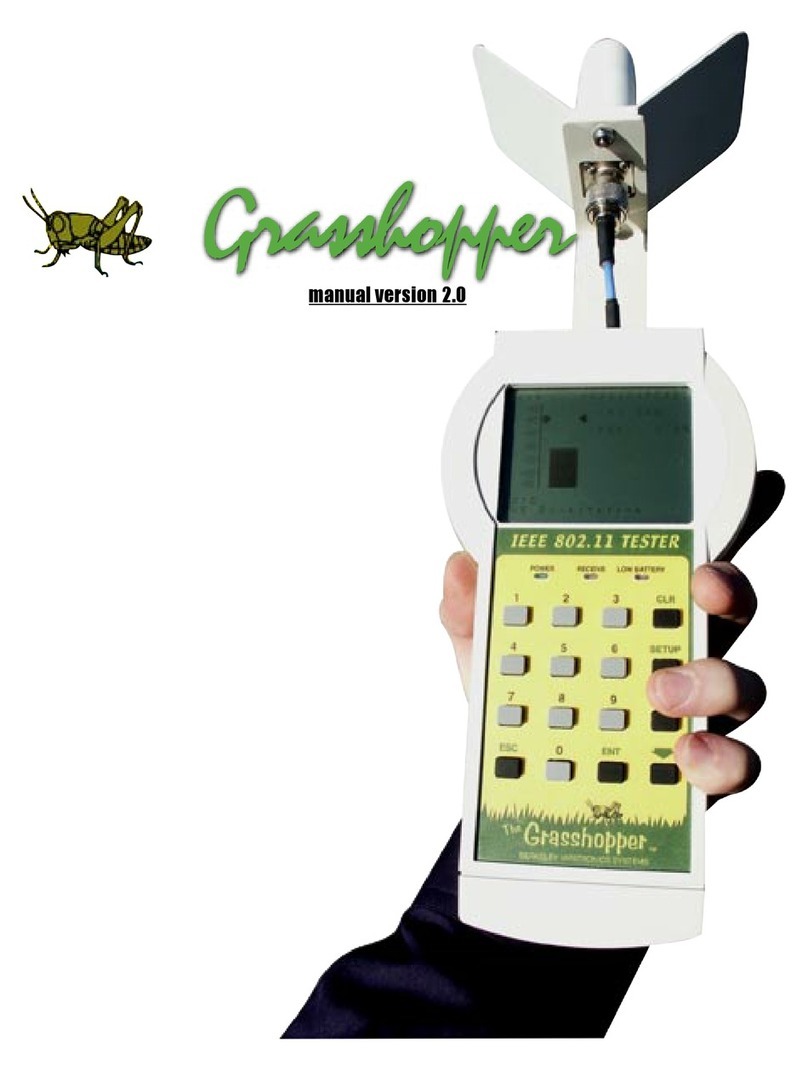
Berkeley Varitronics Systems
Berkeley Varitronics Systems Grasshopper user manual
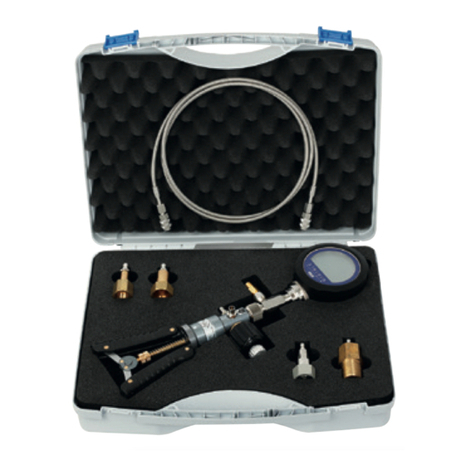
WIKA
WIKA BCS10 operating instructions
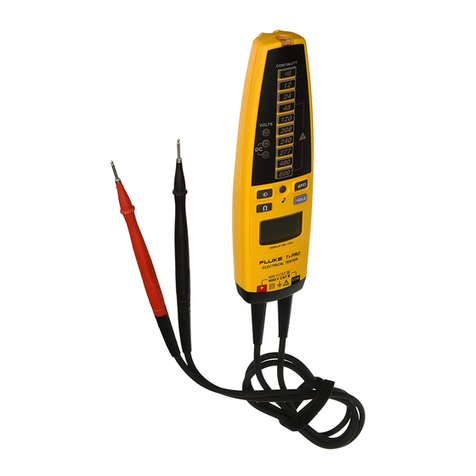
Fluke
Fluke T+ instruction sheet

Wildlife Acoustics
Wildlife Acoustics Ultrasonic Calibrator quick start guide
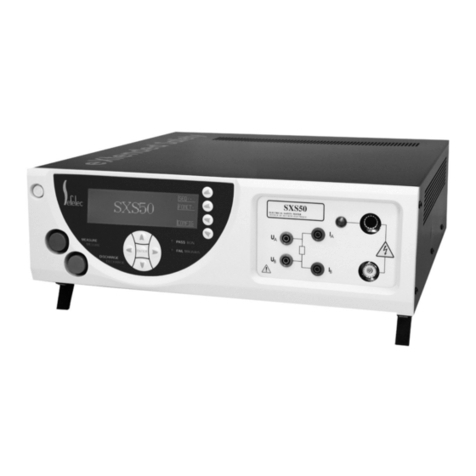
Eaton
Eaton Sefelec RXS50 operating manual
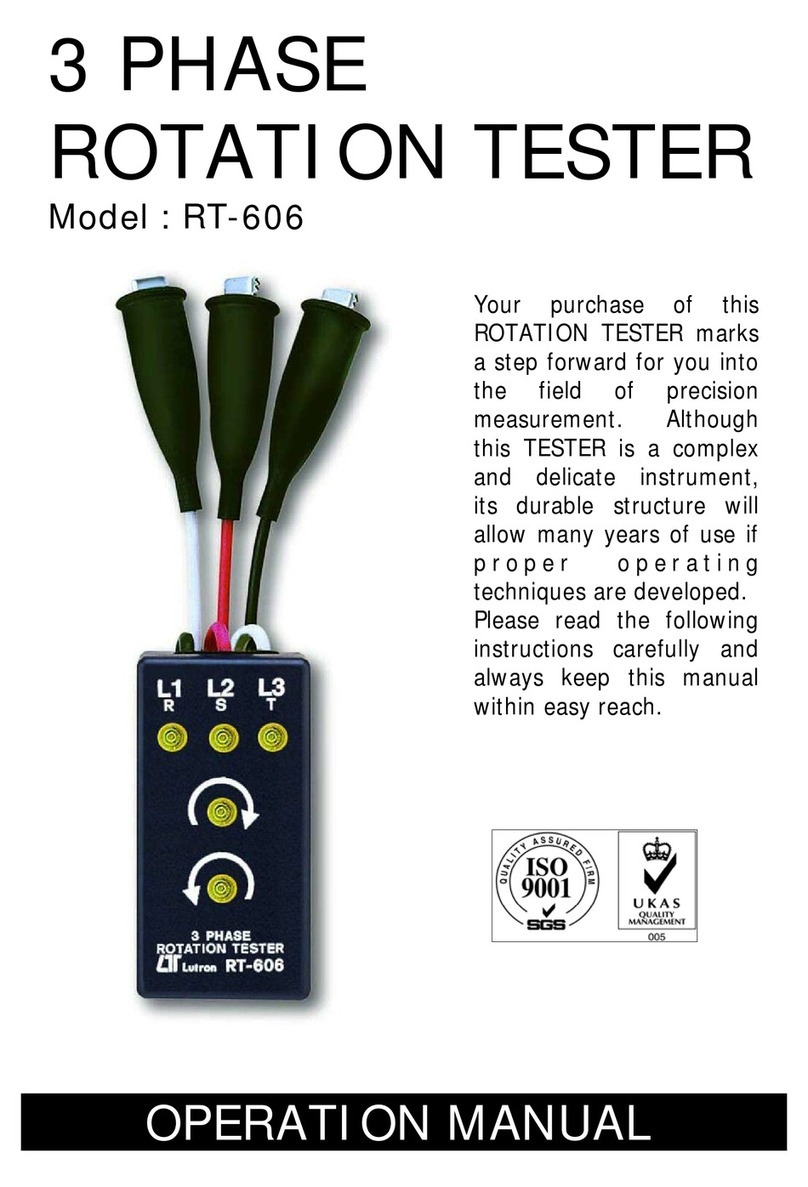
Lutron Electronics
Lutron Electronics RT-606 Operation manual
